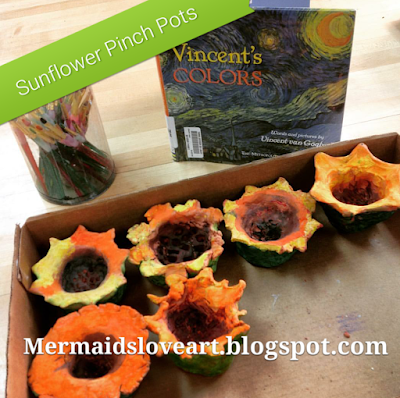
This is a two day project, which last year expanded into a three day project with drawings. On day one, we learned a little about clay. This is first grade, so we covered some of the basics of how the clay would change and become hard. I also read them a book on the first day, to get them thinking of sunflowers.
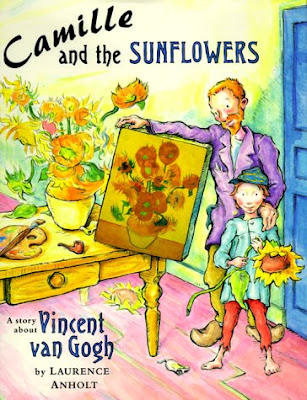
Then the students started with their pinch pots.
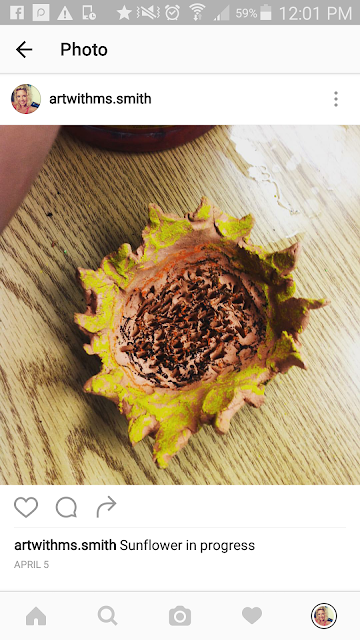
I used red earthen ware, and the kids pulled out the petals by pinching, and added the texture of the seeds in the middle with a wooden tool. This is also a good one for science tie-ins with parts of the flower.
If the kids had extra time, they were allowed to play with the clay to make other things. Sometimes I let them keep their creations, and if I am low on clay then it is just a "play time". They don't mind, because it is fun either way, and it allows for further exploration of the material.
I fire them over the week, so they are ready for step two. Sometimes I set the damp clay pots on top of an already firing kiln to dry them out faster.
Day 2 is our intro to Van Gogh and the coloring part of the lesson.
We observe his work. This is a book I used before I had a Smart Board to show the pictures.
We then use oil pastels to color and blend colors for the flower "pots". The kids also painted tempera paints over the oil pastels to fill in the gaps. Before students came in, I had already separated the colors they would need for both oil pastels and paints. I pulled yellow, orange, various greens, and browns. It worked great! Here's a video of the kids working on these, if you want to check it out!
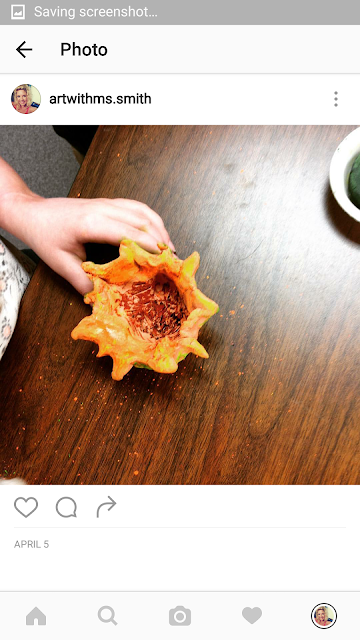
For early finishers I had green paper all set for the kids to do a drawing of their sunflower. They had the choice of zooming in or drawing the whole flower/group of flowers. It made for a nice display at the art show, with a lot of variety.
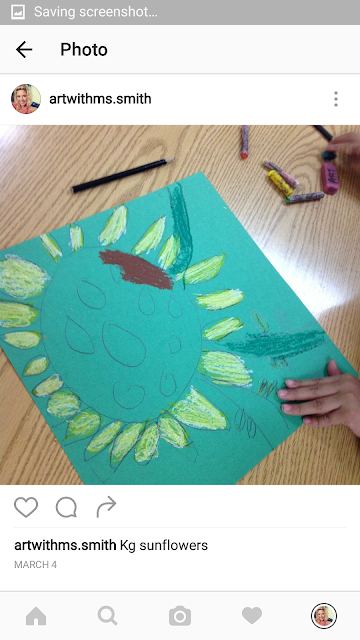
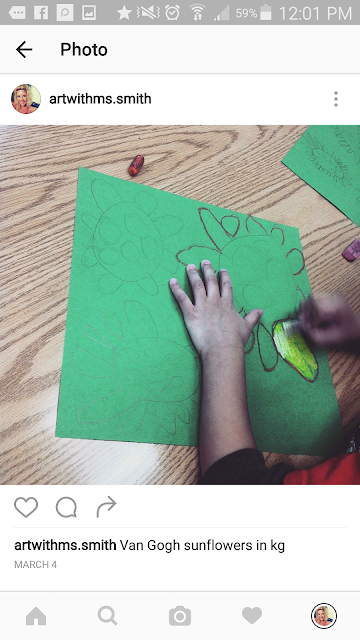
I hope everyone has a wonderful Thanksgiving break!
















































